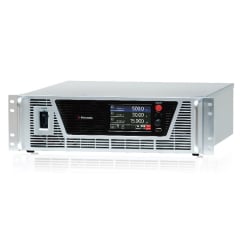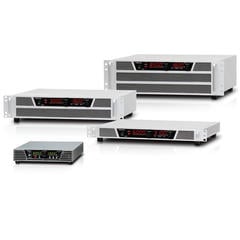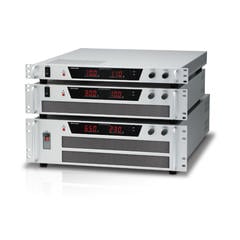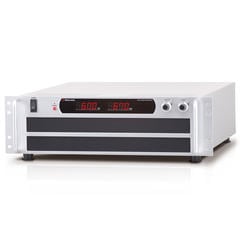
FPD refers to a Flat Panel Display device.
A Flat Panel Display (FPD) is a thin video display device that replaces the cathode-ray tube (CRT).
In the past, cathode ray tubes were mainly used as a device to display images. A cathode-ray tube is a device that emits an electron beam into a funnel-shaped vacuum tube and deflects it with a magnetic field to scan over the phosphor. The phosphor that the electron beam hits emit light and display an image.
However, the disadvantage of cathode-ray tubes was that they required a lot of depth for the display because vacuum tubes were essential. FPDs, which have been increasing in number in recent years, do not require vacuum tubes and are therefore thinner than CRTs.
There are several types of FPDs, including liquid crystal displays (LCDs), plasma displays, organic electroluminescent displays, and LED displays, which are used in all kinds of electronic devices such as electronic paper and digital signage, as well as televisions and smartphones.
Mechanism of FPD
As mentioned above, there are various types of FPDs. Still, this section will explain the mechanisms of liquid crystal displays (LCDs) and organic EL displays, which are often used in electronic products.
How does a liquid crystal display (LCD) work?
LCDs are arranged from back to front in the following order: backlight, a glass substrate, polarizer, liquid crystal layer, color filter, and glass substrate. During display, the backlight is always on, and the image is created by adjusting how much of the backlight passes through which part of the color filter.
At this time, the liquid crystal layer is responsible for adjusting the amount of light transmission. The mechanism by which the liquid crystal layer adjusts the transmission of light is the same as for monochrome liquid crystals and utilizes the principle of the polarizer. In their natural state, liquid crystal molecules have the property of lining up in a loosely regular manner, but when they come into contact with a plate with fine grooves (alignment film), they are regularly aligned alo in a regular manner along the grooves.
When light is shone on a liquid crystal in this state, only light with a wavelength in a certain direction is transmitted. On the other hand, when a voltage is applied to a liquid crystal, the molecules are aligned perpendicular to the alignment film, allowing light to pass through regardless of the direction of the wavelength.
The light emitted from the backlight passes through the polarizer, and only light with a wavelength in a certain direction reaches the liquid crystal layer. The grooves of the alignment film are oriented orthogonally to the grooves of the polarizer, so when no voltage is applied, the light from the backlight is blocked and does not appear on the surface.
However, the portion of the liquid crystal layer where voltage is applied allows light to pass through, so light passing through the color filter is recognized as an image. Thus, in a liquid crystal display (LCD), electricity is applied to the liquid crystal layer to let light through or block it, and to adjust the amount of light that passes through.

Mechanism of organic Electro Luminescence display
Unlike LCDs, OLED displays do not require a backlight. As a result, thinner and lighter FPDs can be realized, and their use in smartphones, game consoles, and TVs has been expanding in recent years.
The term "organic electroluminescence" is mainly used in Japan, while in Europe and the United States (in English), it is called OLED (Organic Light Emitting Diode).
An OLED display consists of three primary colors of OLED materials sandwiched between electrodes, and when voltage is applied, the OLED materials emit light directly.

Manufacturing process of FPD
So, what is the process of manufacturing FPDs?
The manufacturing process of liquid crystal displays (LCDs)
LCD manufacturing is broadly divided into array process, color filter, and module process. In the array process, in addition to circuit design and photomask manufacturing, TFT (Thin Film Transistor) manufacturing is carried out.
1. Array process
Circuit design: Design the arrangement of pixels, the smallest unit of display, and the circuits around the display.
Photomask fabrication: Making photomasks to be used for baking TFTs and color filters onto glass substrates.
Substrate cleaning: Using substrate cleaning equipment, remove dust on the glass substrate used as the base. The processes of film formation, lithography, and etching that take place in TFT manufacturing are similar to the front-end processes of semiconductor manufacturing.
Film formation: Create the transparent electrode film, gate electrode film, wiring film, insulating film, and other films necessary for TFT. Sputtering, in which ionized materials are impinged on glass substrates by electrical discharge, and Plasma Enhanced Chemical Vapor Deposition (PECVD), in which raw material gases are converted into plasma using electric current and microwaves to deposit materials, are used for film deposition.
Resist coating: photoresist (photosensitive material) is coated on the thin film formed on the glass substrate.
Exposure: UV light is irradiated through a photomask onto the resist coated on the substrate to sensitize the areas not covered by the photomask.
Development: After exposure, the circuit pattern is developed by immersing the substrate in a developer. The developed photoresist serves to protect the underlying thin film in the subsequent process.
Etching: Etching of glass substrates using chemicals and ions. Etching removes the photoresist and thin film on the glass substrate, but the developed photoresist is not removed by etching and protects the thin film underneath. This gives the thin film the shape of a circuit pattern.
Resist stripping: removes the photoresist that has been developed and not removed by etching.
2. Color filter and module process
Color filter formation: Red, green, and blue color filters are formed by repeating the processes of film formation, resist coating, exposure, and development. After that, transparent resin, which serves as a protective film, is applied and cured.
Liquid crystal layer filling: The transparent electrodes that control the liquid crystal are formed by film deposition, resist coating, exposure, and development in the same way as the transparent electrodes of TFTs. After that, the resin is applied, and rubbing is performed to form grooves in the alignment film that aligns the orientation of the liquid crystal molecules. Fill the liquid crystal material and paste the TFT substrate and color filter together.
A polarizing plate, backlight pasting: Polarizing plate, driver IC terminal, backlight, etc., are pasted.
OLED display manufacturing process
The manufacturing process for OLED displays is divided into three parts: front-end process, deposition process, and back-end process.
1. Front-end process
In the front-end process, TFT circuits are made. This process is the same as the manufacturing process for liquid crystal displays.
2. Deposition process
In the vapor deposition process, three colors of organic materials, which are also light emitters, are deposited. In most cases, the deposition of organic materials is done by vapor deposition. The organic materials that emit red light are deposited first, followed by blue and green organic materials.
The deposition of organic materials is performed together with the deposition of the hole injection and hole transport layers. This is because organic materials are not electrically conductive and require a hole injection layer or hole transport layer to apply voltage to them.
Copper phthalocyanine and polyethylenesulfonic acid are used for the hole injection layer. This is followed by the deposition of the hole transport layer and then the organic materials.
During evaporation, the areas where OLED materials will not be deposited are protected using metal masks.
3. Back-end process
The back-end process involves encapsulation of the organic material, cutting of the panel, and connection of the wiring.
Reference (Japanese site)
-
日本半導体製造装置協会
https://www.seaj.or.jp/semi/about_fpd.html
https://www.seaj.or.jp/semi/lcd_proc/
https://www.seaj.or.jp/semi/lcd_proc/array_process.html -
SCREEN
https://www.screen.co.jp/ft/products/process -
artience株式会社
https://www.artiencegroup.com/ja/products/colorfilter/fpd/about_fpd.html -
高分子論文集, Vol. 68, No. 1 (2011)
https://www.jstage.jst.go.jp/article/koron/68/1/68_1_45/_pdf
Related Technical Articles
Related Products
Matsusada Precision manufactures and sells a variety of power supplies used in FPD and semiconductor manufacturing equipment.







